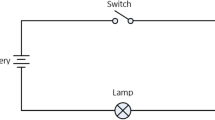Abstract
Conceptual graphs (CGs) share with FOL a fundamental expressiveness limitation: only higher-order logics allow assertions of properties on predicates. This paper intends to push back this limit by reifying underlying relations of CGs (is-a , a-kind-of , referent) into first-class objects (i.e. nodes) of an equivalent, labelled graphs (LG) model.
Benefits of this reification, applied on a subset of CGs, namely simple graphs and rules of form “if G then H”, are discussed in terms of expressiveness, succintness and robustness. We show that using the LG model as an interpreter allows us to improve and extend the results in [2].
Preview
Unable to display preview. Download preview PDF.
Similar content being viewed by others
References
Baader, F., Molitor, R., Tobies, S.: Tractable and decidable fragments of conceptual graphs. In: Proc. of ICCS 1999, pp. 480–493. Springer, Heidelberg (1999)
Baget, J.-F.: A Simulation Of Co-Identity with Rules in Simple and Nested Graphs. In: Proc. of ICCS 1999, pp. 442–455. Springer, Heidelberg (1999)
Baget, J.-F.: Extending the CG Model by Simulations. Research report, LIRMM (2000)
Chein, M., Mugnier, M.-L.: Conceptual Graphs are also Graphs. Research Report (1995)
Gogic, G., Kautz, H., Papadimitriou, C., Selman, B.: The Comparative Linguistics of Knowledge Representation. In: Proc. of IJCAI 1995, pp. 862–869 (1995)
Hendrix, G.G.: Encoding Knowledge in Partitioned Networks. In: Associative Networks, pp. 51–92. Academic Press, London (1979)
Kayser, D.: La représentation des connaissances. Hermes, Paris (1997)
Salvat, E., Mugnier, M.-L.: Sound and Complete Forward and Backward Chainings of Graph Rules. In: Proc. of ICCS 1996. Springer, Heidelberg (1996)
Shapiro, S.C.: A net structure for semantic information storage, deduction and retrieval. In: Advance Papers of IJCAI 1971, pp. 512–523 (1971)
Simonet, G.: Two FOL semantics for simple and nested conceptual graphs. In: Mugnier, M.-L., Chein, M. (eds.) ICCS 1998. LNCS (LNAI), vol. 1453, p. 240. Springer, Heidelberg (1998)
Sowa, J.F.: Conceptual structures: Information processing in mind and machine. Addison-Wesley, Reading (1984)
Author information
Authors and Affiliations
Editor information
Editors and Affiliations
Rights and permissions
Copyright information
© 2000 Springer-Verlag Berlin Heidelberg
About this paper
Cite this paper
Baget, JF. (2000). Extending the CG Model by Simulations. In: Ganter, B., Mineau, G.W. (eds) Conceptual Structures: Logical, Linguistic, and Computational Issues. ICCS 2000. Lecture Notes in Computer Science(), vol 1867. Springer, Berlin, Heidelberg. https://doi.org/10.1007/10722280_19
Download citation
DOI: https://doi.org/10.1007/10722280_19
Publisher Name: Springer, Berlin, Heidelberg
Print ISBN: 978-3-540-67859-5
Online ISBN: 978-3-540-44663-7
eBook Packages: Springer Book Archive




